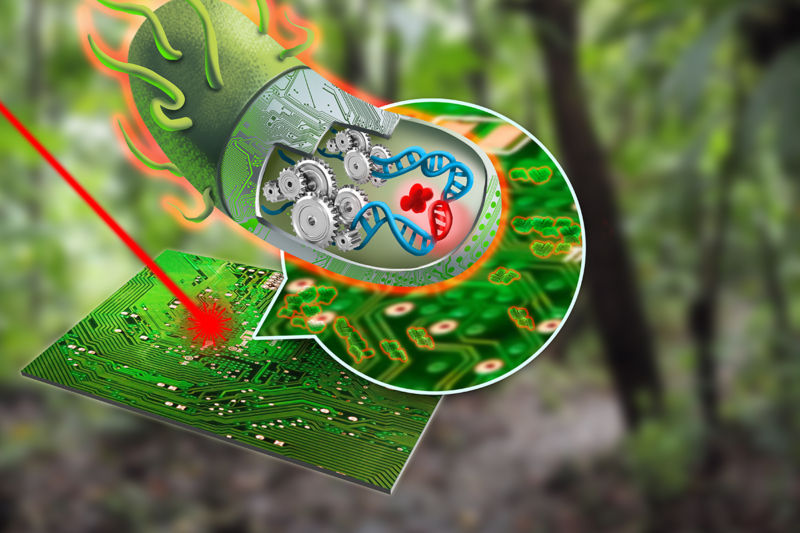The US Army Research Laboratory (ARL) are at an advanced stage of with their synthetic biology research. The work could see bacteria being used to send signals and sense in a way similar to computers, the advantage being that it could potentially provide a more intuitive sensory experience to a piece of tech, and bypass some of the pitfalls unique to electrical structures. The research also has application for new 3D printing materials.

Programming a living cell
To give a little context to the research, when working on the Vespers death mask series for London’s Design Museum artist Neri Oxman, who is also Associate Professor of Media Arts and Sciences at the MIT Media Lab, was supported by a team of MIT biologists to make the third series of 3D printed masks that use e. coli bacteria to create color. The team were able to ‘program’ the microbes in such a way that the burst into a particular color when they came into contact with another substance. The result was something that appeared like an inkblot test trapped in plastic.

This kind of bacterial ‘programming’ is the key proponent of synthetic biology. Studies seek to turn bacteria and proteins into operational systems that can perform the kind of basic commands usually reserved for computer chips. Though microbes will never be able to provide the processing power of a computer, they can already be manipulated to transmit signals of their behavior and experiences. It is hoped that, in time, biologists will be able to engineer bacteria and proteins to a level that helps them to 3D print living organisms, such as plant matter, ‘from the ground up’.
Biosynthetics in the US Army
Speaking to author Eric Tegler in an article for ARS Technica UK, ARL biotech Professor Bryn Adams talks about how her team are looking at synthetic biology solutions for enhancing human performance, she says,
As synthetic biology has realized new capabilities, we’ve really started looking at how we can engineer organisms to control devices […] We’re definitely on track to see synthetic [organisms] first integrated into systems as sensors or actuators, executing a secondary function in a device. I definitely see the science moving that will allow us to make autonomous biohybrid devices where the biology controls the device, makes the decisions, gives feedback, heals damage.
The research so far, as with Neri Oxman’s Vespers, has worked primarily with E. coli – this is due to the bacteria strains’ malleability, and the fact that they have been in scientific study for over 130 years, so scientists are pretty familiar with their behavior. However, there are some big challenges to overcome. Professor Adams explains ‘We can do really complex things in E .coli, but it is never going to be able to survive things like 3D printing or to withstand the natural environment’.
The problem with 3D printing E. coli

Although 3D bioprinting is an ideal vehicle for creating complex structures out of matter, the process of extrusion, and heating or cooling, can damage sensitive living matter. As in organ-on-a-chip technology, the living cells are often supported by another material (such as an alginate), and such ‘vehicles’ or “chassis” in ARL terminology are just the thing that ARL is looking at. Adams expects to see the capability to host the organisms within her lifetime, and it won’t just be research kept to the lab, or even to the military.
An aim of the research is to identify and develop groups of bacteria that can work in unision, with each strain serving a particular function. If such a combination can be found then Adams envisions an application where even a material like wood could be 3D printed.
Potential uses
MIT are one of the institutions working on biosynthetic research with ARL. As one of the world’s biggest hubs of 3D bioprinting research, their input could see biosynthetic enhancements to almost any field of expertise, although indications are that medicine may be one of the strongest applications of biosynthetics.
In the military, it is predicted that biosynthetics will enhance anything from human strength, to the body’s ability to heal. The US Army has also recently launched a specilaised Center for Adaptive Soldier Technologies with the aim to ‘build an active community of interested volunteers that push the boundaries in both science and technologies within this specific area’. It will be fascinating to see how the technology develops, and how 3D printing can adapt to fulfil these new challenges.
Featured image shows future warfare Image via: USArmy on Twitter



